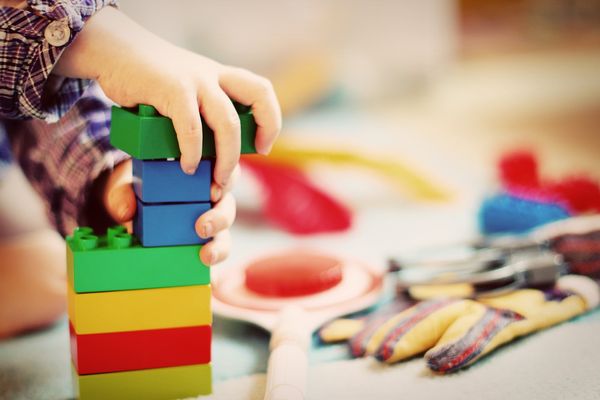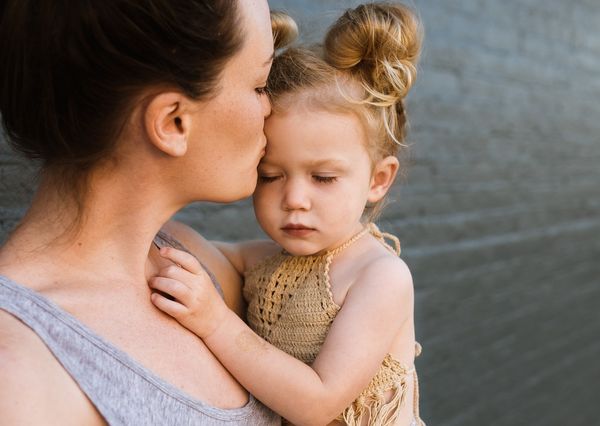Level Three: Proactive Connection and Redirecting Behavior

Hey parents! Before we jump into the third level of attachment, let's dive into a bit of theory. This time, I'll chat about being proactive and redirecting not-so-great behavior.
Last time, we talked about how crucial it is for your kiddo to feel a constant connection with you. Kids can't hold onto us if they don't see us, right? So, when they're off having adventures away from home or away from you, they get handed over to other caring grown-ups, bridging the gap when you're not around. Even when they're deep into a super cool game, little ones might lose that connection. That's why it's vital to catch their attention every now and then. Even if you're keeping the contact continuous, you might still notice kids who are constantly seeking contact, tugging at you as if to make sure everything's all good. Some parents even complain that they're always offering contact, but it seems like their child doesn't quite feel it, always wanting more. So, what's the deal?
Here's the scoop. It's not just about filling your child with contact and closeness; it's about doing it before they ask for it. And when you respond to your child's request, give them more than they asked for. Let me break it down for you.
Think about the relationship between a husband and wife. What if the husband only showed love when the wife asked? She asks for flowers – he buys them, requests a gift – he gives it, suggests going to the movies – he's in, asks for help – she gets it, wonders if he loves her – and he always says "of course." Sure, he might happily do everything she asks, but will she truly feel loved? Is it enough for her if she initiates everything, even though it seems like the husband is meeting all her demands? Now, picture a scenario where the husband unexpectedly brings flowers, buys her favorite chocolate, takes out the trash without being asked, or simply raises his eyes to meet hers. Totally different vibe, right?
The same goes for your little ones. If you only respond to their requests, even if you fulfill all their wishes, they might not feel that you're genuinely thrilled to be with them, that you want to be around them, that you love them. That's why it's crucial to initiate contact before your child rushes over with a toy, pulling you to play on the floor. Feed them before they ask, hug them before they come to you. And if your child brings a book for you to read, take three books instead of one, or make their favorite drink and read while sipping on a tasty hot beverage. I remember a fantastic example from a Newfeld Institute instructor. When her daughter came running for help with pulling up her tights, the mom didn't just help – she tickled, lifted the tights playfully, giving more contact than the child expected.
I get it; the idea of giving more and earlier might be a bit intimidating at first. You might worry that you'll have to dedicate all your time to your child. But it's not about the quantity of time; it's about the quality of contact. Quality contact and closeness that your child didn't even anticipate fill them with energy directed towards exploring the external world. Then, you can suggest a couple of spoons and shovels, and your child will happily explore them next to you while you attend to your tasks.
I really like the concept from the Waldorf approach (if I'm not mistaken) about inhaling and exhaling. Inhaling is about filling your child with contact, and exhaling is about the energy they gain from your attachment, enabling them to reach out to the external world. These breaths alternate continually, and their length increases with age. Inhaling isn't just about games; it's also about feeding, paying attention to your child, lying down for a cuddle, taking a walk together, doing something jointly. Hanging wet laundry can also be an inhale if you chat about something or play a game. Or, like I do now with my younger son – he hands me clothes from a basket, and we name whose item it is: Mom's, Dad's, his, or his older brother's. It's simple but also about contact.
Now, let's talk about another aspect I wanted to share – redirecting a child's undesirable behavior. We've discussed redirection before – it's like a bridge thrown over a separation, focusing on contact rather than division. It could be the scent of mom that reminds a child of her when she's not around, or dad's slippers that can be worn when he's at work. It's when you talk before bedtime about what you'll do in the morning or how you'll meet in a dream.
We often naturally bridge the gap with our kids because we sense that they struggle without us. We write little notes from work or bring home doodles. But when it comes to challenging behavior, our intuition may not work as effectively. We want to teach our kids, show them what's not okay, and help them draw conclusions. The thing is, kids are emotional beings. Almost all their actions stem from some emotion. When they're overwhelmed by emotions, they can't absorb lessons – that's one. Plus, they interpret our "lessons" through emotions – that's two. Trying to teach or discipline in conflict usually leads to more problems. In reality, our kids know how to behave. If you calmly ask them when things are good, they'll tell you the right stuff. But in the heat of the moment, they may struggle to recall, and it becomes a division for them. Kids, especially those on the third level of attachment, want to be good for their parents. So, instead, we need to clear that division. And it's easy once you know how.
Gordon Neufeld suggests redirecting challenging behavior this way. In the heat of conflict or aggression, focus not on the current situation but on a future moment of connection. "You're frustrated now, I see it's tough for you. I love you. I'm still your mom, and I'll always be. Can't wait for us to bake cookies together tonight." It might sound unusual or artificial, but it falls into place as you practice it. You show that our relationship is fine, not dependent on their behavior. We can handle and endure any behavior. You reassure the child that everything is okay, our connection is okay, our plans are intact, and we eagerly anticipate our special time together. This is vastly different from the practice of getting mad at a child for their behavior, canceling plans, or taking away cherished items due to bad behavior.
Alright, that wraps up the theoretical part for today, and now, let's get practical.
Level Three of Attachment: Belonging Attachment
This level usually kicks in around the third year of a child's life. You'll notice kids using words like "mine" more often in relation to family members, their belongings, and toys. They want to involve both mom and dad in their activities, take pride in being a family with us, enjoy giving and receiving gifts, and sometimes even express a desire to marry their parents. It's all about belonging. "I'm yours, and you're mine, forever." Thanks to this level, kids want to be good for their parents; they want to be obedient. We take their side (more on that later), and they want to take ours: agree with us, defend us in front of others (who hasn't had a child defend mom against dad and vice versa), trust us, and follow us.
So, how can we nurture kids of any age at this level?
I want to point out that the ways of nurturing, courting, and bridging can repeat across different levels, and that's normal. Our lives are way more interesting and profound than a simple mathematical sequence. For example, giving your child something of yours could be about the first level, focusing on smells and sensations. It could also be about similarity, the second level. Or, it could be about belonging – because I want to give you this, you're important to me, and I'm giving you something of mine. So, don't be surprised if you see ideas from previous levels popping up here.
Let's dive into some hands-on ways to strengthen that special connection with your kiddos, especially those aged 2-3.
First off, use those endearing phrases like "my boy" or "my girl." Emphasize the family unit by saying "our family" instead of just "me" or "me and Kate/Dima." You can get crafty as a family – handprints, drawings, matching bracelets – anything that symbolizes your togetherness. Walk, talk, and repeat that you're all part of one team, one family. Share special gifts. Collect your child's gifts in a box, showing how much you cherish them. Flip through family photos together. Dress alike, wear matching accessories. Engage in activities with your child one-on-one or as a family. Play games where moms and little ones team up. Allow your child to have ownership over their toys; it's okay if they don't want to share them sometimes. Share stories about your lifelong togetherness. Play cooperative games and board games together for a shared goal.
Always be on your child's side in every situation, even when you think they might be wrong. Don't take the side of teachers, caregivers, or neighbors, even if your child is misbehaving. Find a way to show that you'll handle everything together. Create family rituals and celebrate family holidays uniquely.
When it comes to your partner, continue the same language and actions. Say "my husband" or "my wife." Use "our family" in stories instead of "I" or "I and Kate/Dima." Wear matching clothes and accessories. Engage in team-oriented games, compete against others, not within the family. Establish family rituals, traditions, and shared habits. Exchange special gifts and share your belongings.
By the way, team-building is also about the third level of attachment. You can do similar things as a family or with other families.
When courting your kids, prepare special gifts from relatives. Prepare special gifts for your loved ones and caregivers/teachers. Encourage others to emphasize the importance of these gifts and talk about how they cherish them. Look at family photos, tell stories that emphasize your family bond. Take qualities from relatives that will remind you of them. Use words that show belonging, like "Dad's boy" or "Grandma's granddaughter." Involve relatives and teachers in some rituals and traditions. It's great if another adult can teach or show something to your child, and then your child can show it to you. And vice versa, your child can teach other adults something they know.
To bridge the gap at this level, share your things with your child, even in bed if they find it hard to fall asleep. Give little surprises or bring something with you when you come home. Establish rituals and traditions that can be maintained even when you're not at home. Plan time together, deciding what you'll do when you meet.
Remember, it's crucial to always be on your child's side and not create division when interacting with teachers and caregivers. Stay on the same side as your child. Play as if you're tying an imaginary string on your wrists, and the child has the other end. Play pulling the string when you're close, and releasing it when you're apart. You can play the same game with real strings or ribbons.
If you have toys at home representing parent-child relationships (animals, dolls), take the parent with you, and your child can take the child. Later, they can "meet" and talk about something.
As always, these ideas depend on each child. Moreover, kids often come up with these games themselves; the key is for us to know where to look. Understanding this theory can help us notice and apply these ideas in practice.
Hope this information helps you better understand 2-3-year-olds (and beyond).
Attachment Theory: Why It Matters for You and Your Child



